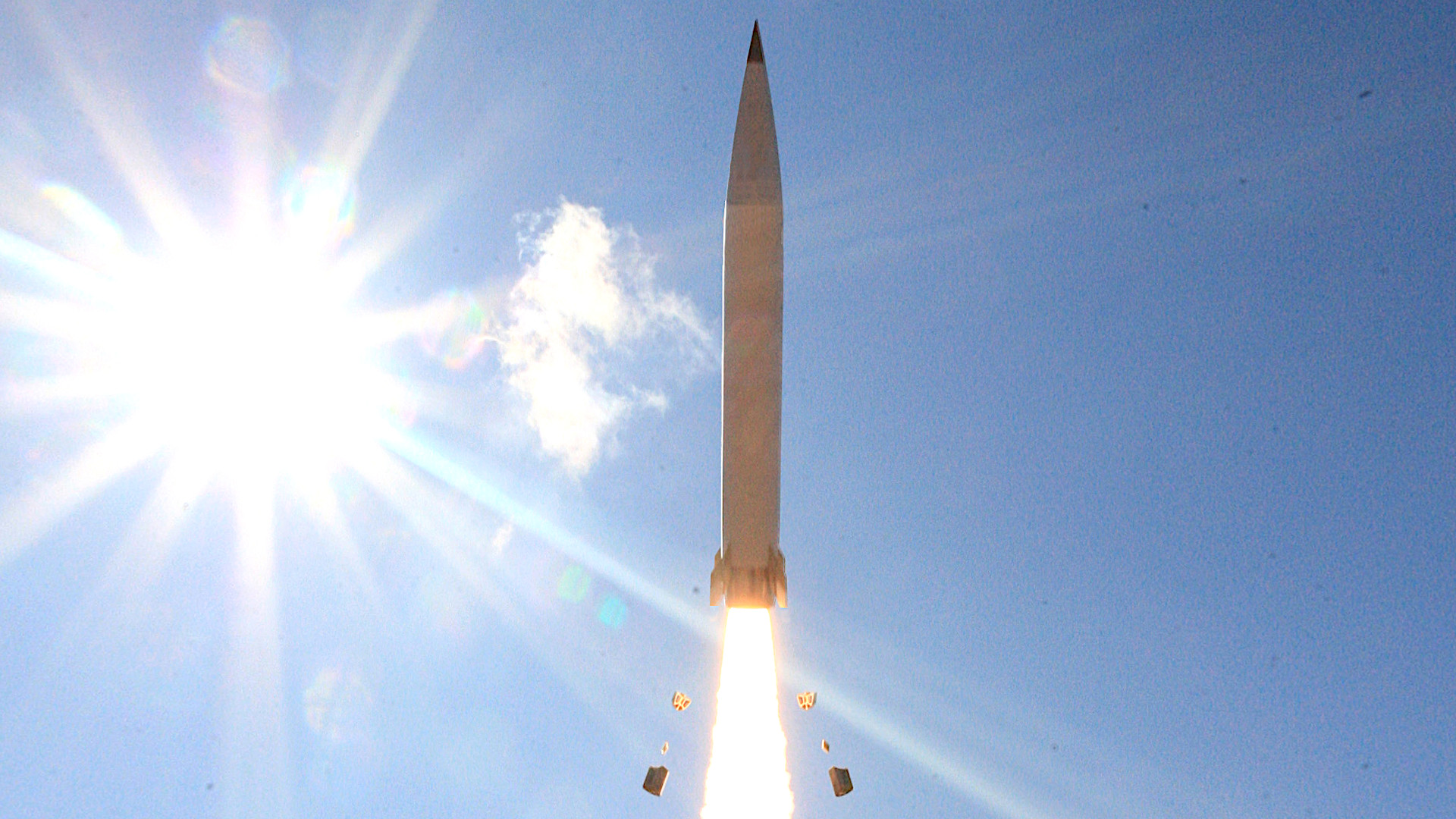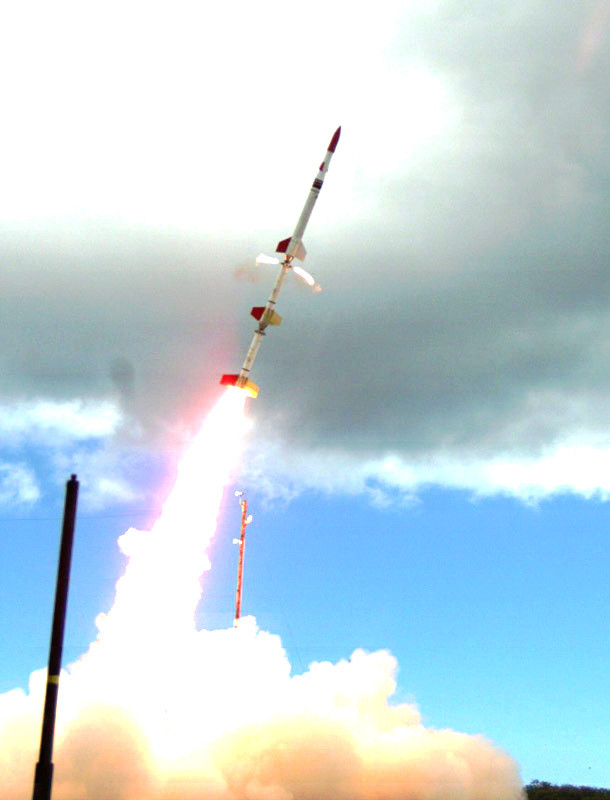Lockheed Martin has announced the latest test of its Precision Strike Missile, or PrSM, for the U.S. Army, though the company has not said exactly how far the weapon flew. The distance appears to be close to, if not over, a previous range limitation for ground-based ballistic and cruise missiles that the United States had adhered to until 2019 under the now-defunct Intermediate-Range Nuclear Forces Treaty, or INF, with Russia.
The PrSM test was conducted on Oct. 13, 2021, from Vandenberg Air Force Base in California using an M142 High Mobility Artillery Rocket Systems (HIMARS) truck-mounted launcher. The missile flew out into the Pacific Ocean. This test had originally been expected to take place in August but was pushed back because of scheduling conflicts.

“The Precision Strike Missile continues to validate range and performance requirements,” Paula Hartley, Vice President of Tactical Missiles at Lockheed Martin Missiles and Fire Control, said in a statement. “Achieving this long-range milestone for the baseline missile demonstrates PrSM’s capability to meet our customer’s modernization priorities on a rapid timeline.”
In terms of the distance of the flight, Lockheed Martin has only said that it was the “longest flight to date” and that it succeeded in “exceeding [the] maximum threshold” for the PrSM as set by the Army. An earlier test of this missile in May saw it fly approximately 400 kilometers, or around 248.5 miles, and official documents say the Army’s current plan is for PrSM’s to be able to hit targets beyond that range.
There were reports earlier this week that the expectation was that the missile would travel at least 499 kilometers, or around 310 miles, in this new test flight. Alerts to airmen and mariners detailing airspace restrictions related to the impending test, which had been issued last month, do show a potential impact area that looks to stretch out to between 400 and 500 kilometers from Vandenberg.
That 499-kilometer distance is significant, as the old INF treaty had prohibited the United States and Russia from deploying ground-based ballistic and cruise missiles with ranges between 500 and 5,500 kilometers. That agreement collapsed in 2019 after the U.S. government pulled out unilaterally, ostensibly over Russia’s deployment of a banned ground-launched cruise missile system. The Army, which had started the PrSM program before that point, subsequently changed its range requirements for the missile after the elimination of these range restrictions.
The growing range of weapons like PrSM can only be a factor in the Army’s new use of Vandenberg for these kinds of tests, something that officials in California only approved in July. The Army’s main overland missile test facility, the White Sands Missile Range in New Mexico, is simply not big enough to handle tests out to these kinds of distances.
At the same time, unfortunately, the U.S. government also has limited options for overwater testing of missiles out to much greater distances, as evidenced by the scheduling issues at Vandenberg that led to the delay in this PrSM test. In addition, test launches into the Pacific are inherently easier for potential American adversaries, particularly China, to observe and try to gather information about the weapon in question.
“If I’m an adversary, I’m looking forward to the notifications to mariners and aircraft of when you’re doing that test so I can park [an] AGI [an intelligence-gathering ship] and every one of my spacecraft right there to watch you test that so I can glean as much MASINT [measurement and signature intelligence] information as possible,” retired Air Force Major General Jon Norman, who is now Vice President of Customer Requirements & Capabilities, Raytheon Missiles and Defense, had said during a talk at the Air Force Association’s 2021 Air, Space, and Cyber conference last month, speaking primarily about the testing of advanced hypersonic weapons. Norman and his fellow panelists made mention of possibly increasing the use of the Australian government’s test range at Woomera and similar potential cooperation with Canada to help mitigate these operational security issues.

PrSM, which is primarily intended to replace the Army’s existing Army Tactical Missile System (ATACMS) short-range ballistic missile, is the lower end of a three-tier future missile force the service is planning to field in the next few years. The middle tier role will be filled by Typhon, also described as a “Mid-Range Capability” system, which will be capable of firing ground-launched examples of the U.S. Navy’s SM-6 and Tomahawk missiles, as you can read more about here. The Dark Eagle Long Range Hypersonic Weapon (LRHW), which you can find out more about here, will form the upper end of these missile capabilities. The Army views these missiles, collectively, as critical to its ability to fight and win future high-end conflicts against near-peer adversaries, such as China or Russia.
The Army plans to employ PrSM from both HIMARS and tracked M270 Multiple Launch Rocket System (MLRS) launchers, which are already capable of firing ATACMS missiles, as well as 227mm artillery rockets, including guided types. The service is also exploring the possibility of fielding an unmanned launch vehicle derived from HIMARS, seen in the video below, which could also shoot PrSMs in addition to other weapons.

Lockheed Martin is already planning to conduct another PrSM test launch later this year, as part of the Army’s Project Convergence 21 exercise, which will feature various new weapon systems and other technologies the service is in the process of developing. The company is also expecting another contract award from the Army before the year is out, which will fund the development of a moving-target capability for PrSM. There has been talk in the past specifically about the potential use of these missiles in an anti-ship role.
The ability for PrSM to engage ships could be particularly valuable in the context of a future conflict in the Pacific, potentially against China, where operations in and around the maritime domain would be a core focus. The ever-extending range of these missiles that Lockheed Martin has been able to demonstrate will only give them added flexibility in that region and elsewhere.
If nothing else, this latest test of the PrSM makes clear the Army, along with the U.S. military, as a whole, is well on its way to obtaining a mixture of new, longer-range missiles that only a few years ago it had been prohibited from fielding under the INF.
Updated 3:45 PM EST:
Lockheed Martin has confirmed to The War Zone that the Army’s “maximum threshold” range for PrSM is 400 kilometers and that yesterday’s test flight exceeded that distance. The company could not provide any other details about the range demonstrated in this latest test.
Contact the author: joe@thedrive.com
